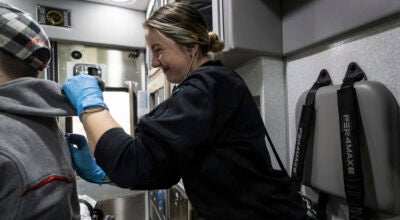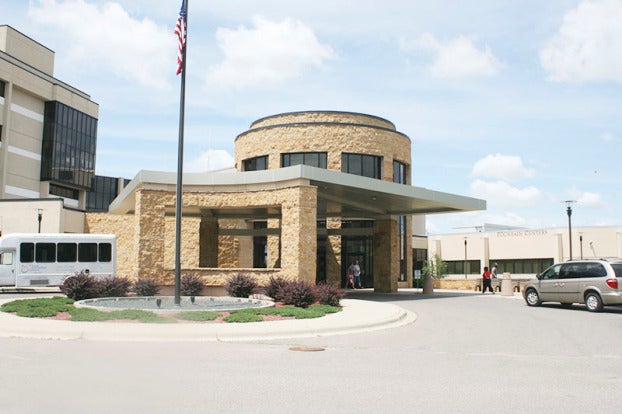160 COVID-19 deaths reported, most tied to long-term care
Published 9:30 pm Tuesday, April 21, 2020
|
Getting your Trinity Audio player ready...
|
No new local cases for second day in a row
State health leaders faced fresh questions Tuesday about the pace of COVID-19 testing and the numbers of deaths in long-term care facilities. With Minnesota cases continuing to climb, they made it clear that many curbs on daily life were still needed.
Federal guidelines recommend states don’t start to reopen the economy before seeing a two-week downward trend in COVID-19 cases. “By that measure, we are not ready to reopen,” Jan Malcolm, the state’s health commissioner, told reporters, adding that won’t be the only metric Gov. Tim Walz will examine as he weighs extending his current stay-home order beyond May 4.
Malcolm’s comments came hours after her agency reported Minnesota’s COVID-19 death toll jumped to 160, with 17 more deaths reported from Monday. Of the total deaths so far, more than 70 percent are connected to long-term care facilities. That includes 14 of the latest deaths.
The Health Department also noted a one-day dip in the number of intensive care patients from 126 to 117 while current hospitalizations tied to the disease remained stable.
The total number of positive tests for the disease jumped again, hitting 2,567. Just under half of those infected since the pandemic began have recovered to the point they no longer need to be isolated. Officials say the number of cases identified represent only a sliver of the total number of Minnesotans carrying the coronavirus.
“It’s not that the epidemic isn’t growing. It’s growing, so far, in a measured way that is not exceeding our capacity to respond,” Malcolm said.
“This is not a situation where everything is going to be going in the same direction at the same time,” Malcolm said of the overall trends around the disease. “It seems contradictory. This is a stable situation where every day we see more cases and more deaths.”
Nobles County cases jump
The new numbers come a day after Gov. Tim Walz acknowledged the mounting deaths and hospitalizations may be the beginning of COVID-19 surge. “Minnesota has started potentially up the climb that we thought would come,” Walz told reporters.
That climb was accelerated by an outbreak in southwestern Minnesota’s Nobles County where cases have skyrocketed the past two days. State officials Tuesday reported 101 positive tests now for COVID-19 in Nobles County — up from two cases Wednesday and nearly triple the number reported Saturday.
The JBS pork processing plant in Worthington is at the center of that outbreak. On Monday morning, company executives announced they were indefinitely shutting the plant, which employs some 2,000 workers, to try and get control of the situation. State health officials say at least 33 of the Nobles County cases are JBS employees.
Nobles County has the largest outbreak in Minnesota outside the Twin Cities area and Rochester. It has the highest rate of COVID-19 cases of any county relative to its population.
Although Walz faces new political pressure from Republicans to restart the economy, he said Monday that science will continue to drive his decision-making. He’s moved already to open golfing, boating and other activities with safe distancing rules.
But he’s cautioned repeatedly that restaurants, bars and big sporting events — places with big crowds close together — will be among the last pieces of the economy to restart. While the state is better positioned to cope with a spike in cases, the governor said complete normalcy won’t return anytime soon.
Even when businesses and retail establishments do reopen, they are “going to have to change the way business is done for the next 18 months,” Walz said Monday. “The retail buying experience is going to change dramatically.”
There must be a clear safety plan before businesses can reopen on a broad scale, he added. “If opening up the businesses were safe, we’d do it tomorrow,” he said. “Just to say open up, that’s not reasonable.”
Need for high quality testing
Beyond the updates on deaths and cases, the Health Department on Tuesday also reported:
The youngest person in intensive care is 19 years old. For weeks, it had been 25; the Health Department noted a 20-year-old on Monday. The age range of deaths remains 56 to 104 years old.
Of the 160 deaths so far, 113 are associated with long-term care facilities, said Kris Ehresmann, the state’s infectious diseases director. Officials have said most of the deaths have involved people with underlying health problems.
More than 47,000 COVID-19 tests have been completed in Minnesota. That’s still far below the 5,000 a day Walz says is needed by May 4, when his stay-at-home order is set to expire. Health Department data show fewer than 1,200 daily tests reported on average since April 14.
Malcolm acknowledged the frustration over the slow ramp-up on testing, noting that it’s been difficult to secure lab supplies and other needed products and get the tests to those who need them, but she said that the state expected to push forward soon on the next phase of testing.
University of Minnesota scientists last week offered at least some hope on that score. The U said its researchers have invented a way to solve the state’s testing shortage and dramatically expand testing statewide for COVID-19 and antibody resistance. The U is seeking $20 million from lawmakers to implement the plan.
“The last thing we want is a lot of testing that isn’t of high quality, that produces tests that aren’t very reliable,” she said.
With the state at least able to manage the outbreak at this point so the system isn’t overwhelmed, and no decision yet on extending the stay-home order, “it may seem like we’re in a lull right now,” said Ehresmann. “We know we’re going to see more cases.”
Confirmed cases
Faribault Co.: 4
Freeborn Co.: 33
Mower Co.: 26
Steele Co.: 9
Waseca Co.: 3
— Information from the Minnesota Department of Health



